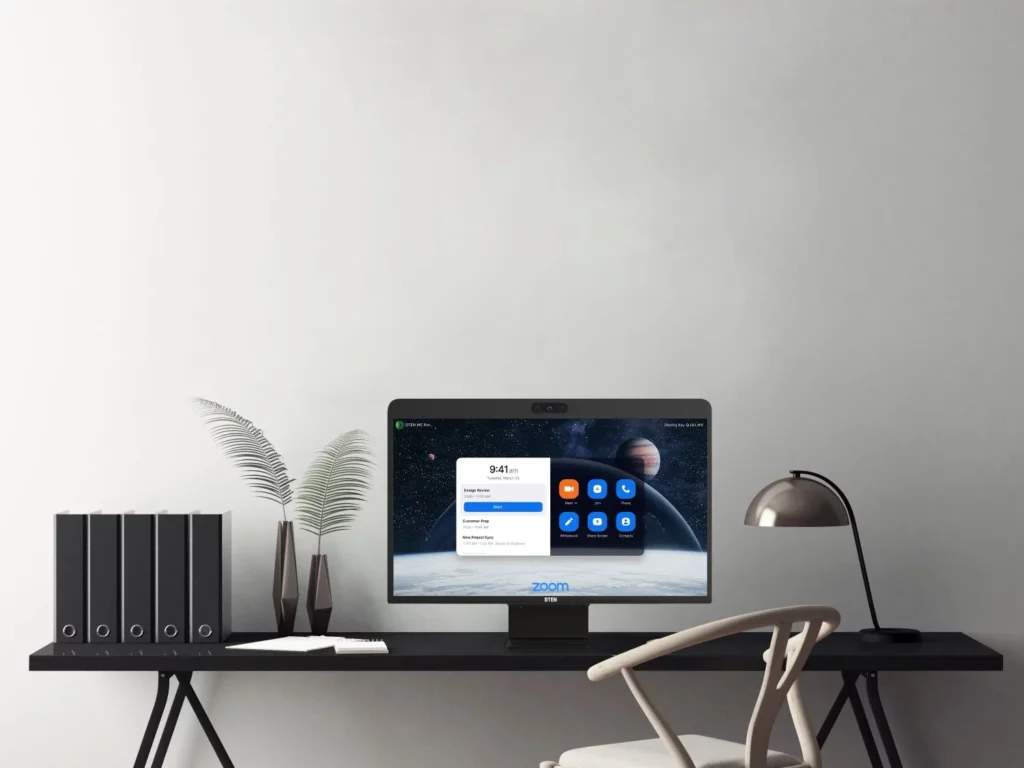*The article was updated in October 2022*
The hybrid working model is here to stay, but many employers and employees are still unsure of how to get it right. Therefore, Naotech’s experts decided to write a helpful guide with tons of useful information.
Hybrid work is a very popular concept, but it can also cause a lot of confusion. Before COVID-19, if you asked most people “what does hybrid work mean?”, they would probably have no clue. But that has drastically changed.
Since the global pandemic, hybrid working has become the new norm. In Accenture’s Future of Work Study 2021, 83% of surveyed employees said that they prefer working in a hybrid work model. In a poll conducted by Zoom in 2021, 65% of people participating, who had been working from home throughout 2020, reported that their preferred work model was hybrid.
Eventually, what started out as a necessity, turned into a highly advantageous work structure for many employers and employees. But wait, we are getting ahead of ourselves. Let’s start at the beginning.
What is hybrid working?
In order to talk about hybrid work, we first need to define it.
The word “hybrid” is defined by Merriam-Webster Dictionary as “something that is formed by combining two or more things”. In essence, hybrid work is about creating a flexible “mix” between different work environments and practices – especially where employees work, and when.
Hybrid models allow employees to divide their work hours between the office and remote locations such as their homes, satellite hubs and even cafés. In addition, some hybrid working creates flexibility regarding the standard 9-5 work hours, allowing employees to structure their hours differently, in accordance with their needs, so that they can maximize effectiveness.
What are the origins of hybrid working?
Many of us think that hybrid work was invented in recent years, but this isn’t true. Its roots can be traced to 1970’s and a concept called telecommuting. According to the Atlantic, a book published by Jack Nilles in 1973 called “The Telecommunications-Transportation Tradeoff” suggested that working from or close to home – as opposed to commuting to the office – is a better alternative. Telecommuting basically means “working from a distance”. Back then, the concern wasn’t a global pandemic, but rather an enormous energy crisis and an oil embargo. In the years that followed, other concerns such as gridlocked highways and air pollution helped increase telecommuting’s popularity.
Telecommuting continued to impact work culture in the 1980s and 1990s, but the dominance of office culture hampered its inclusion into the mainstream. Another element that kept telecommuting from spreading was the unavailability of the internet. That all changed in the 2000s, when employees began using their laptops, internet connections and phones for work. In addition, younger populations entering the workplace began demanding a more substantial balance between their work and personal lives. According to an article by Insider, both Millennials and Generation Z crave workplace flexibility – even if they differ in their approach.
Way before COVID-19, hybrid work from home was a concept that was coveted – and often realized – by many employees across numerous industries. The global pandemic took a burgeoning trend and blew it up to enormous proportions – with the support of a robust technology, like Zoom. The pandemic also made many reluctant employers embrace hybrid lifestyles. While some employers view remote work as a necessary short-term solution, others have fully embraced its advantages. As suspected, these changes stayed with us even in the highly-anticipated post-COVID world.

A Matter of Scheduling
A lot has been written about hybrid work from the “where” perspective, but less notice has been given to the importance of the “when”. In fact, hybrid work scheduling is no less important than work location.
First of all, how does one establish when to work from the office and when to work from other locations? When hybrid remote work scheduling is concerned, it all comes down to maximizing productivity while also balancing personal wellbeing. Many employers realize this, and allow their executives to give their team members the freedom to structure their own scheduling routines – as long as it includes popping in at the office several times a week.
We can’t talk about scheduling without discussing work effectiveness. If there is one thing that hampers effectiveness, it is interruptions. In order to be effective, especially when working in from several locations, interruptions must be kept to a minimum. Smart scheduling can help minimize interruptions. For example, employees can structure their home work hours around their children’s school and after-school activities – so that they have the house to themselves when they have important missions to accomplish.
On days that they have to be in the office, employees can plan their work in accordance with a wide range of key parameters, such as traffic, public transportation timetables, and the schedules of their peers.
Hybrid Work Strategies
Employers and employees who decide to go “all in” on a hybrid model of working must commit to one or several key hybrid work strategies. These strategies form the basis for official corporate hybrid policies.
What exactly are hybrid work strategies? In their article in Harvard Business Review, Jim Keane and Todd Heiser offer four separate strategies for companies who wish to design a hybrid workspace that will increase their productivity. The first strategy is using technology and numerous hardware elements such as lighting, cameras, microphones, speakers and screens to enhance remote worker inclusion and create a digital-physical “stream”. The second strategy involves rethinking open and closed spaces in the office – with more meetings taking place in open spaces and more individual work taking place in private offices or pods. The third strategy calls for a commitment to a “fluid workspace” that can support dynamic change, constantly adapt to changing needs, and enhance innovative thinking. The fourth strategy promotes the creation of office environments that facilitate both collective and individual work – or as Keane and Heiser call it – “Me” and “We”.
Definingthe Right Policy
A company’s hybrid working policy must be aligned with its chosen strategies. First of all, it should clearly outline the company’s rules regarding hybrid work. This includes where employees are allowed or encouraged to work (at home, in cafes, in satellite hubs), when they can work, and what means they must use (Zoom and other remote platforms) to communicate and share their work.
Every company differs in its approach to hybrid working policy. Some policies require mandatory arrivals at the office on a weekly or bi-weekly basis. Some embrace a more suggestive approach and replace “mandatory” with “recommended”. Other companies differentiate between their employees – letting some position holders work almost entirely from remote locations, while mandating other employees who are defined as critical to spend most of their time at the office. And some companies encourage work away from the main office – as long as it is conducted in a designated satellite hub.
These policies should be very comprehensive. The more ground they cover, the better. They should cover themes such as work performance measurement, reporting, work practices away from the office, guidelines for interaction with colleagues and peers, work hours, IT and technology best practices, cyber security guidelines, and more.

Hybrid Working Pros and Cons
Like everything in life, hybrid work has advantages and disadvantages. Here are the most common hybrid working pros and cons for both employers and employees.
The Pros:
- Enhanced productivity: Numerous studies and reports indicate that when applied correctly, hybrid work models enable employees to enhance their overall productivity.
- Better well-being: Hybrid working is supposed to facilitate a better work/life balance. When this happens, employees feel more calm, energized and productive – and everybody wins.
- Optimal time use: When workers settle into their ideal hybrid working environment, they are able to do more in less time. They are able to avoid time-consuming traffic jams, anticipate hours filled with interruptions, and find their personal quiet time for getting work done.
- The best of both worlds: Office culture is important, but so is spending more time at home. With hybrid work, employees can benefit from dynamic interactions with colleagues – and more home time.
- Health safety: The pandemic is still here, and other viral diseases aren’t going away, either. Hybrid working is ideal for optimal office safety, because employees that may have been exposed to viruses can simply continue working from their home work stations.
The Cons:
- Office culture: Office culture is a key parameter to corporate success. When the office is half (or more) empty, it can become must harder to sustain a winning culture, and to generate employee excitement.
- Accessibility: After years of working in dynamic office environments, many employers and employees still struggle with online communication. Some feel that when they work remotely is harder for them to get their message across, or fully engage with team assignments. This is especially true in organizations that have not adapted their technologies to their hybrid working model.
- Poor personal connections: In the end, we are all people – and our success rests on our ability to connect. To form close professional bonds, nothing beats face-to-face interactions. Yet when these are reduced, or when employees alternate their times at the office and therefore never see each other, forming professional friendships can become much harder.
The Full Checklist for The New Work Environment
Employees working in hybrid environments are constantly looking to prove themselves. They desperately want to make the office/home balance work for them – and for their respective organizations. With them in mind, we compiled a list of traits that can form an effective skillset:
- The extra mile mindset: Hybrid employees operate in two different environments. In order to make it work, they need to be sharp and proactive. But most importantly, they need to care about results. It’s not a 9-to-5 world with attendance cards. Far from it. The most successful hybrid workers are the ones who are able to think from the organization’s perspective, and deliver beyond expectations. The easiest way to do that is by making a conscious decision to commit 110%.
- Learning abilities: To be an ultimate professional, it’s not enough to be good at what you do. You need to keep evolving with your profession and continue learning. The ability to pick up new skills and absorb new data that can be used to elevate performance is a key skill for hybrid workers, who are constantly measured by their deliverables.
- Self-sufficiency: Hybrid workers work a lot from home, all alone with their laptops. Sure, they have their department’s goals to guide them, but they also have tons of time to improvise and get things done in unexpected fashion. Some employees work by the book and prefer to wait for instructions. But the most effective hybrid workers use the distance from the office to think independently and show initiative that impresses their superiors.
- Positivity: Positivity is the ultimate work catalyst. But keeping a positive attitude can be challenging when juggling work and family-related tasks all day long. This takes conscious practice. Employees who can look on the bright side can also create a positive environment for team members.

Developing Interpersonal Relations
The hybrid work environment encourages employees to look at their relationships with their colleagues from a new angle. As a result, they soon discover that there’s more than one way to be true team players. Here are some of the necessary social skills for the hybrid workplace:
- Emotional intelligence: People who possess high emotional intelligence are very good at understanding others and empathizing with the conflicts and emotions of their peers. Emotional intelligence promotes open communication and trust, and is therefore a wonderful asset to both managers and employees in the workplace. It is even more important in hybrid environments, which requires top performance and constant communication in order to justify itself. When remote employees share their experiences (on Zoom, for example), it is easier it is for them to translate their insights into effective work performance and a better work culture.
- Leadership: Leadership is a broad concept. As a hybrid work skill, it can be defined as the ability to influence colleagues and team members to work together and deliver optimal results – both from the office and remotely. This begins with self-discipline (self-leadership, if you will) and continues towards charting a path for collective success.
- Communication: This is a very important tool. Hybrid workers who master the art of face-to-face office communication and remote Zoom conversation are poised to succeed. Effective communication begins first and foremost with superior listening skills. It also includes the ability to voice disagreement when necessary, and introduce unique opinions that others will relate to.
Turning Hybrid Working Challenges into Opportunities
In order to make the most out of hybrid work, employers and employees must establish the model that works best for them. They should also embrace a new skillset. Overcoming challenges doesn’t have to be difficult. The following tips can help both employees and employers enjoy beneficial advantages – and avoid many disadvantages.
- Understand your needs: Employers, make sure that your hybrid model can support your short and long-term business objectives. Also, make sure that your employees feel they can commit to your chosen model, and that they embrace it because it makes it easier for them to deliver what you expect them to.
Create a clear hybrid working policy: As an employer, you should avoid confusion at all costs. Make sure your employers understand your hybrid working policy. Better yet, get them involved. Tap into their feedback and insights as you create or update your policy.
- Don’t neglect performance evaluation: This is more important than ever before. For starters, you need to evaluate your employees, especially when they are working away from the office. But evaluation can actually make employees feel more secure in their work away from the office, and encourage them to elevate their performance regardless of location.
- Invest in your work stations: This is a tip for employees working from home. Make sure that your workstations are spacious and ergonomic. Many people working from home complain about stiff necks and back pain, and inappropriate chairs, desks or imprecise physical ergonomics are a major cause. Treat your work stations as if they were your office – even if they are in your hallway or bedroom.
- Create an open dialogue: In order for their hybrid working model to work over time, employers shouldn’t be afraid to make changes. To do that, employers should make time to meet with their employees and evaluate the effectiveness of their hybrid arrangement. If something isn’t working, then a small adjustment often does the trick.
- Double down on technology: Today’s advanced technologies are essential to the success of hybrid working In fact, this is the perfect intro to the next section of this article…

Essential Technologies
Technology plays a huge role in the success of the hybrid working model – and we should know. At Naotech, our role is to recommend, plan and implement technologies for organizations and businesses that wish to move forward and achieve success in today’s new landscape.
Here are a few important technologies that really make a difference:
- Video conferencing technology: Welcome to the Zoom domain. This technology speaks for itself, and is greatly responsible for enabling businesses all over the world to continue working throughout the pandemic. A video conferencing platform is absolutely essential.
- Cameras: Advanced cameras designed especially for video conferencing have greatly enhanced the hybrid working environment. These innovative cameras come with a wide range of features, from horizontal angle view and wide-angle lenses to HD quality and pan-tilt zoom.
- Audio equipment: Remote engagement is not only about what you see – it also requires top-level audio. Today, there is an abundance of sound products designed specifically for remote work, from virtual microphones and cutting-edge speakers to noise control technology for dynamic offices.
All-in-one systems: Systems like DTEN D7 were designed specifically for video conferencing office rooms – and include video conferencing software, a state-of-the-art screen, an advanced wide-angle camera, 16 dedicated microphones, and more.
At Naotech, our goal is to help you maximize your work potential, from all locations. For more information about our expertise, customized services and product portfolio, get in touch today.

